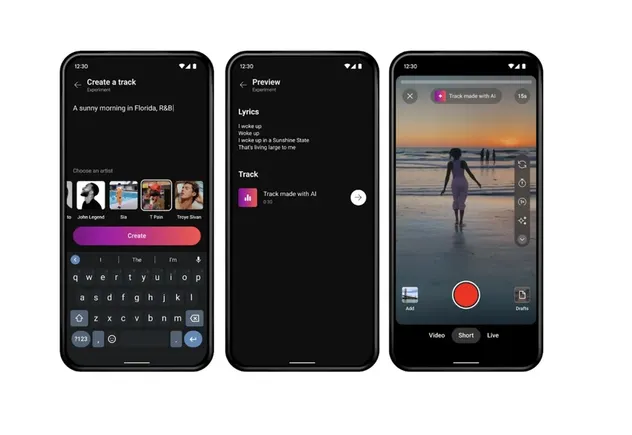8 Proven Higher Education Marketing Strategies to Boost Enrollments
As students compete with one another to get accepted to their dream school, higher education institutions are also constantly seeking innovative ways to attract and retain students. As there is a significant amount of options available to potential students...

As students compete with one another to get accepted to their dream school, higher education institutions are also constantly seeking innovative ways to attract and retain students.
As there is a significant amount of options available to potential students who seek to get a higher education, standing out for universities requires more effort than just traditional marketing. In fact, a deep understanding of what today’s students and their parents are looking for is essential.
Universities are vying for the majority of admissions as the higher education market is expected to grow from its estimated USD 736.81 billion in 2023 to USD 1,560.36 billion by 2030. This is where higher education marketing comes into play.
Universities and colleges vie not only for local and national attention but also for the gaze of international students. But where do you start, and what strategies will truly resonate with your target audience, aka students? With the advent of digital platforms and the increasing importance of a global educational perspective, universities and colleges must innovate continuously.
In this article, we aim to shed light on effective proven marketing strategies for higher education institutions that can significantly boost enrollment numbers and enhance institutional visibility. Once you get the hang of today’s digital marketing essentials and aligning marketing strategies with the expectations of prospective students and their parents, universities can navigate the competitive terrain of higher education with confidence.
How to Create an Effective Higher Education Marketing Plan?
As there are different aspects of marketing, creating an effective higher education marketing plan plays an important role. The first step in any successful marketing plan is to know whom you’re talking to. This means understanding the demographics, interests and behaviors of both potential students as well as their parents. Even if mainly the students are the ones who decide on a school that they seek to attend, their parents or financial supporters might play a significant role in their decision processes. What are their aspirations, fears, and concerns regarding higher education? Tailoring your message to address these points can significantly increase engagement. Conducting surveys, focus groups, and using social media analytics will also be beneficial to gather insights about your audience’s preferences and behaviors.
Next is defining the goals of your institution. Whether it’s increasing enrollment by X%, enhancing diversity of your student body, or boosting your brand’s visibility, having clear, measurable objectives is another crucial point. These goals will guide your higher education marketing strategies and help you measure success. Keep in mind that your objective should be SMART: Specific, Measurable, Achievable, Relevant, and Time-bound. For instance, rather than aiming to “increase enrollment,” set a goal to “increase enrollment by 10% among international students by the end of the next academic year.” This clarity will guide your marketing efforts.
Additionally, remember that not all channels are created equal, especially when it comes to reaching young adults and their parents. Digital platforms, social media, and targeted email campaigns often provide the best ROI, but don’t discount the power of traditional methods like open days and printed brochures for certain demographics. The choice of channels should be informed by where your target audience spends their time. For younger demographics, digital platforms like Instagram, TikTok, and Youtube are invaluable. However, don’t overlook the power of email marketing and traditional outreach methods for reaching parents and other decision-makers.
Although defined clearly, applying all these efforts to your higher ed marketing plan and the continuous effort of it might be challenging or perhaps you may not have the resources or the time for it. Thus, we recommend finding an education marketing agency for a productive collaboration.
What Marketing Strategies Do Universities Use?
Many universities are increasingly using online platforms to reach potential students. Digital marketing through SEO, PPC, and social media allows institutions to target their audience with precision. Personalized communications have also become a staple, with universities crafting messages that resonate on a personal level with prospective students. Open Days and even virtual tours offer a glimpse into campus life, while alumni engagement and partnerships with educational bodies widen the institution’s reach and appeal.
8 Effective Higher Education Marketing Strategies for Universities
Now, let’s take a look at the educational marketing ideas, strategies and examples by famous universities you can benefit from to attract new students!
Mastering Social Media to Elevate Higher Education Marketing
Let’s start with something we all know and love (or have a love-hate relationship with): social media. Social media platforms are not just for memes and viral videos; it’s a goldmine for higher education marketing. Why? Because that’s where your audience hangs out! From Instagram stories, YouTube and TikTok videos that showcase campus life to X threads discussing academic programs, social media platforms offer a direct line to potential students. To do that though, we recommend you to share captivating stories, highlight student achievements, and consistently share the vibrant energy of your campus life.
Take the University of Glasgow, for example. They’re killing it on Instagram. With a blend of breathtaking campus photos, snapshots of student achievements, and a peek into the daily lives of students, they’ve turned their account into a digital open day. What’s their secret sauce? Engagement. They use polls, Q&A sessions, and even let students take over their account. It’s authentic, it’s engaging, and it gives prospective students a real taste of university life.
Boosting Your University’s Visibility with SEO
Now, let’s switch gears to something a bit more behind-the-scenes but equally important: SEO (Search Engine Optimization). Imagine potential students actively searching for universities and programs – wouldn’t you want your institution to be the first they see? SEO makes this dream a reality. In fact, you can think of SEO as the compass that guides potential students or their parents directly to your university’s website. SEO makes your site more visible on search engines like Google. You can optimize your website content with relevant keywords and ensure user-friendliness. This ensures your university appears on the first page for searches related to your academic offerings, attracting qualified leads who are actively seeking information. SEO for educational institutions is essential because if you’re not on page one, you’re not in the race.
Student Ambassador Programs
Who better to speak about your institution than those who are living the experience? Student ambassadors can share their genuine stories through social media and campus events, creating a relatable and authentic marketing voice. Your first step should be to empower them to share their experiences, answer questions at campus events, and connect with prospective students on social media perhaps through Q&A sessions. Remember, young adults often trust their peers more than traditional marketing messages, so leveraging the power of student ambassadors can significantly boost credibility and build trust with your target audience. Young adults are influenced by their peers, and a few positive (or negative) comments might affect their decision to apply to your institution.
The Massachusetts Institute of Technology (MIT) leverages its student blog platform, where current students share their experiences, challenges, and achievements. This approach offers an authentic glimpse into life at MIT, helping prospective students envision themselves at the institution.
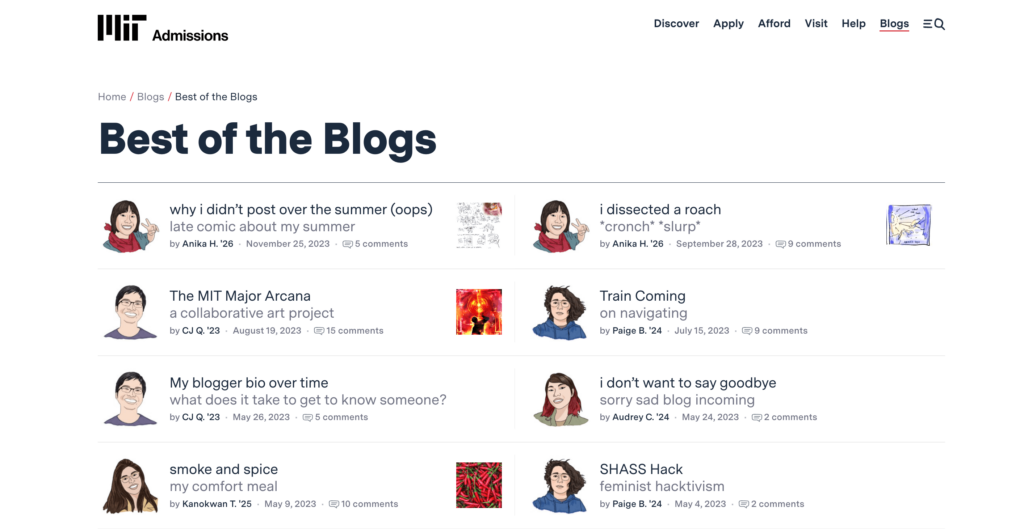
Reach The Right Students with Targeted Ads
Another strategy for you to utilize is advanced targeting on platforms like Google and Facebook to reach potential students based on their interests, search behavior and more. This precision marketing will increase the relevance and effectiveness of your ads.
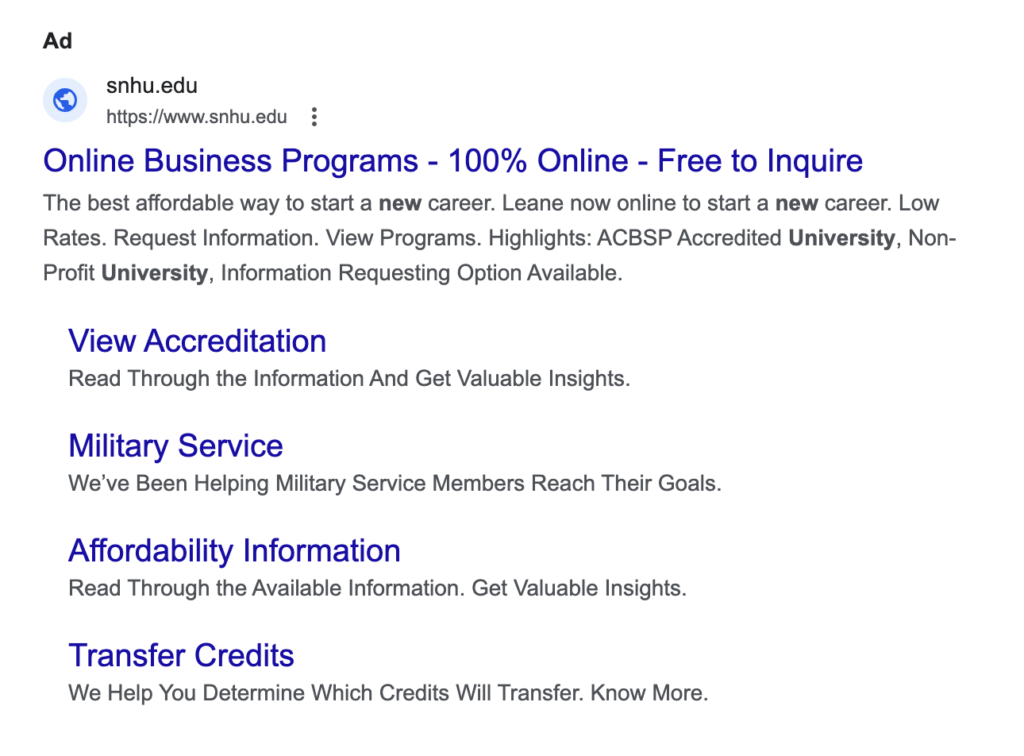
Southern New Hampshire University (SNHU) has become well-known for its extensive use of targeted digital advertising, focusing on adult learners and online students. Their campaigns are tailored to highlight the flexibility and accessibility of their online programs, appealing directly to non-traditional students’ needs.
Collaborative Content with Current Students and Faculty
Imagine potential students trying to picture themselves at your university. Collaborative content, featuring both your great professors and current students, can help them do just that! It’s like having a friend show you around campus and introduce you to your favorite teachers.
Here’s why it works: students trust real stories over fancy marketing talk, and seeing real people can help them connect with your university on a deeper level. Plus, hearing from current students about academics and campus life can even help them decide on a major.
Think about it – faculty Q&A sessions where students ask the questions they really want to know, student blogs or videos sharing their experiences, or even collaborative research projects exhibiting the university’s passion around ideas. This kind of content not only builds trust but also makes your university more engaging and interesting to prospective students, ultimately leading to more applications and a thriving student body. So, we recommend you ditch the jargon and embrace the power of authentic voices!
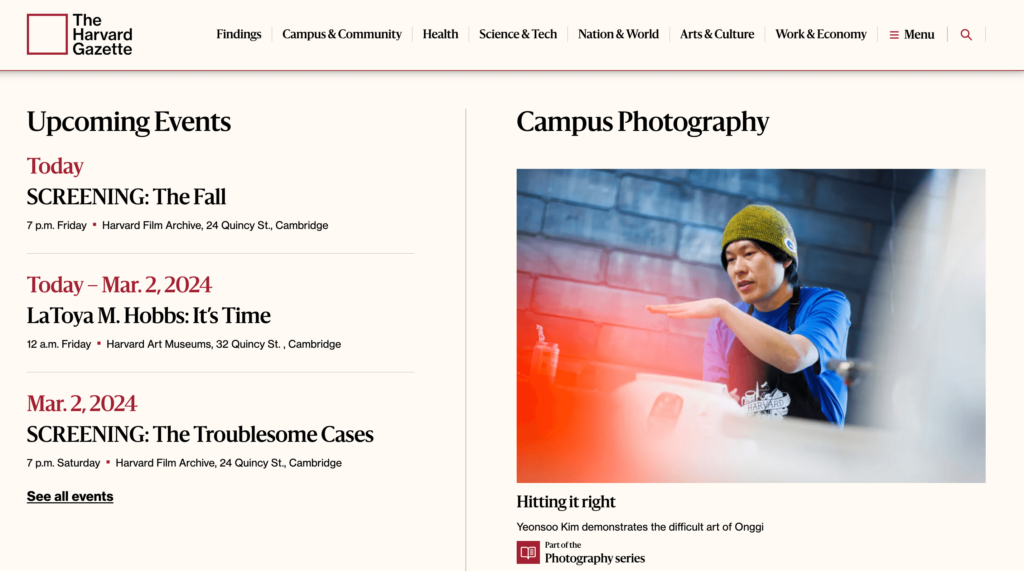
Through its online publication, “The Harvard Gazette,” Harvard university features stories on faculty research, student achievements, and campus events. This content serves to showcase the intellectual community and vibrant campus life, engaging prospective students and the broader academic community.
Virtual Reality Campus Tours
Break down geographical barriers with VR tours, allowing prospective students from anywhere in the world to immerse themselves in campus life, fostering a sense of belonging before they even apply.
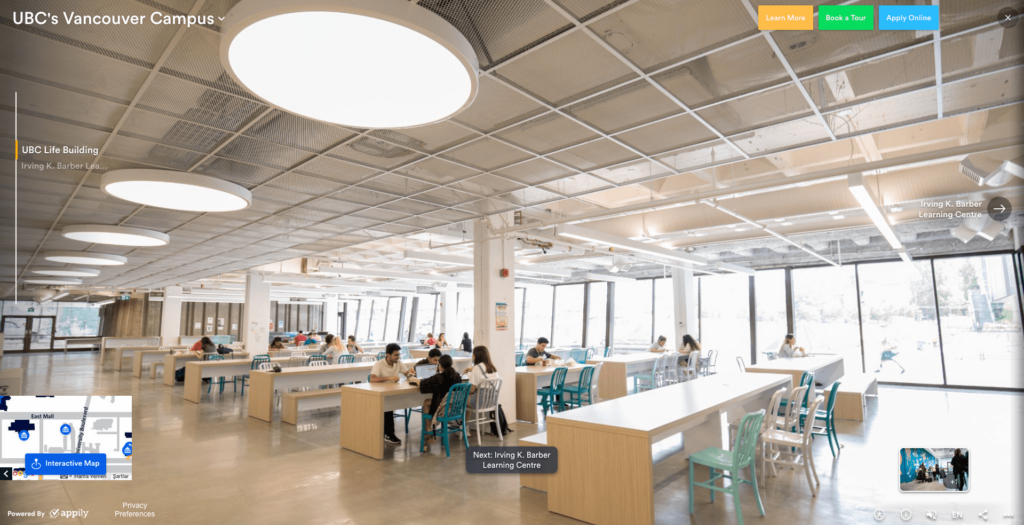
The University of British Columbia (UBC) offers virtual reality tours of its campus, allowing prospective students from around the globe to explore the university’s facilities, residences, and natural surroundings. This innovative approach helps UBC attract international students by providing an immersive experience of the campus environment.
Niche Program Promotion
If your institution offers unique academic programs, ensure you highlight them with targeted marketing campaigns. Specialized programs can attract students with specific interests, setting your institution apart from competitors.
Georgia Tech has successfully marketed its Online Master of Science in Computer Science (OMSCS) program as a highly affordable and prestigious online degree, targeting working professionals in the tech industry. The program’s unique value proposition has been highlighted through targeted marketing campaigns, significantly increasing enrollment.
Alumni Success Stories
Who would better describe their experiences and the campus life than alumni? They came, experienced, and started their careers. Thus, alumni success stories are the most important elements of your higher education marketing strategies. Sharing the achievements of your alumni might be the best way to demonstrate the value of your university’s education. Success stories are powerful testimonials that inspire potential students to envision their future with your institution.
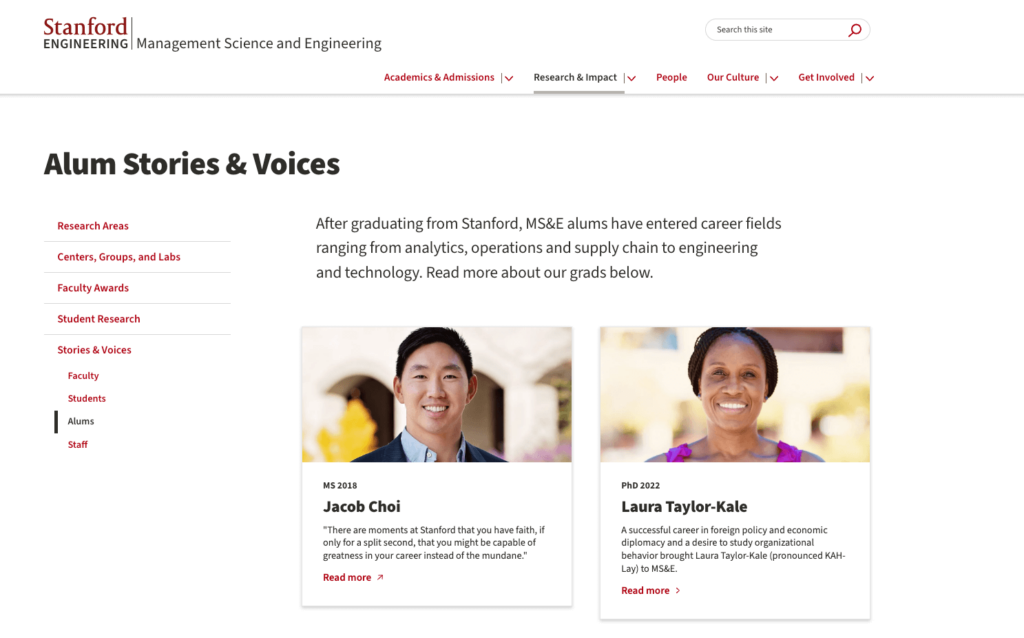
Stanford University frequently shares success stories of its alumni through various channels, including its website, social media, and print publications. These stories often highlight how Stanford has contributed to their professional achievements, serving as powerful testimonials to the quality of education and opportunities by the university.
Conclusion
New technologies and platforms change the way higher education institutions connect with their current and future students. By adopting these proven strategies, universities and colleges can not only increase their enrollment numbers but also build lasting relationships with their future students and their families. Remember, the key to marketing success lies in understanding your audience, delivering value, and continuously adapting to the changing digital landscape.
Let these strategies be your guide to marketing success in the competitive world of higher education.

 MikeTyes
MikeTyes 











_2.jpg)













